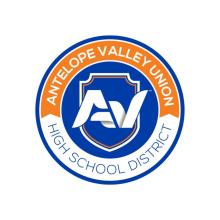
Building fiber networks in sparsely populated rural communities is not cheap. And when it comes to deploying fiber drops to individual homes set back relatively far off the main roads where fiber lines pass by, it can prove to be cost prohibitive to connect those households.
But in Vermont, the push to ensure every household in the Green Mountain State has access to the gold-standard of Internet connectivity, the Vermont Community Broadband Board (VCBB) this week unanimously approved the creation of a new “low-income long and underground drop program.”
“We’re not talking about (connecting) multi-million mansions two miles off the road, but households with a true need,” VCBB Deputy Director Robert Fish tells ILSR, adding:
“What good is a fiber network if households can’t connect? This (program) is one way we can address affordability, whether it’s long aerial drops or underground.”
Re-Investing Leftover Federal Rescue Plan Funds
Approved by the VCBB at their regular meeting on September 9, the new program will use $2.5 million in leftover federal Rescue Plan funds to subsidize the cost of connecting low-income households in high-cost locations.

“These are Capital Project Funds (courtesy of the American Rescue Plan Act) from projects that came in under budget,” Fish explained, noting how most of the $245 million the state has received to build out broadband networks has already been awarded to the 10 Communications Union Districts (CUDs) now bringing fiber service to Vermonters long neglected by the big incumbent providers.
Currently, the state is in the midst of a fiber-to-the-home building boom as nine of Vermont’s 10 CUDs (broadband utility districts) have already received Rescue Plan funds to build out networks in their multi-town service territories.
Eight of the 10 CUDs, Fish said, are in active construction with one CUD (Northwest Fiberworx) still in the pre-construction phase. Only one CUD (Chittenden County Communications Union District) has yet to be awarded construction funds.

Working On The Details
Typically, Internet service providers do not assess individual households’ excess connection fees if the home is within 400 feet of a distribution line.
It led to the state establishing a 400 foot buffer “to ensure addresses with a standard drop were covered by the broadband provider and marked as served” on the state’s broadband maps, VCBB’s Communications & Outreach Manager Herryn Herzog explained.
“While this result creates a great visual for fiber deployment, it does not account for addresses with long aerial drops that require an additional customer contribution that can at times be several thousand dollars. It also fails to account for the exponentially higher costs of providing an underground drop where required,” Herzog said, noting that some Vermont communities – manufactured home communities in particular – require all utilities to be underground.
Designed to address these challenges, Fish added, the “long drop” program will subsidize the connection costs to extend fiber lines to low-income households that are beyond the 400 foot buffer.
To access program funds, CUDs (or private ISPs working with the CUDs) will need to submit a grant application – guidance for which is expected to be detailed and announced in the next month or so.
Fish said his office is moving quickly to stand up the program, as the VCBB staff is keenly aware that federal Rescue Plan Fund rules require that the funds be spent by December 31, 2026.
VCBB staff is still “doing analysis to estimate the cost per drop per property” the program will fund, as well as establish guidelines on which households will qualify – likely based on the same requirements the federal government used to determine eligibility for the now defunct Affordable Connectivity Program (ACP), Fish explained.
Grant applicants, he said, will be expected to reach out to would-be subscribers “who would like to be connected but can’t afford the extra cost” and then “package addresses together” in the grant application.
Feeding Two Birds With One Seed
In addition to helping bring broadband to low-income households – many for the very first time – the program will also have the added benefit of helping to put the CUDs on more solid financial footing.
“The higher the number of customers, the more income (CUDs) have – and the more sustainable their business plan will be,” Fish said, adding that additional funds from the state’s “Connectivity Initiative” will add another $1.2 million to the program’s coffers.
“Another thing I like about this program is the potential it has to attract private dollars,” he said, pointing to the “great interest among hospitals (across the state) for telemedicine” as well as philanthropic donors who may want to help further expand the program.
“We are very excited that the (VCBB) board unanimously approved the creation of this program that we think will help make broadband more affordable for Vermonters.”

Meanwhile, as the state prepares to launch the program, officials noted that the VCBB is preparing to release its updated dashboard detailing how the state has spent its Rescue Plan Funds on broadband expansion to date.
Vermont’s efforts to address affordability challenges are particularly noteworthy given the collapse of the Affordable Connectivity Program (ACP) earlier this year. Yet, despite the challenges that lay ahead, state broadband officials are moving full steam forward, expanding on the story that was the focus of a new documentary “Connected: Vermont's Grassroots Effort for Rural Broadband.”
For more on how Vermont is supercharging its telecommunications infrastructure by putting its weight behind community broadband-driven efforts, read our in-depth report Neighborly Networks: Vermont's Approach to Community Broadband.
*This story has been updated to clarify who is eligible to apply for the long drop grant program
Header image of Vermont farm courtesy of the Vermont Community Broadband Board
Inline images courtesy of the Vermont Community Broadband Board







